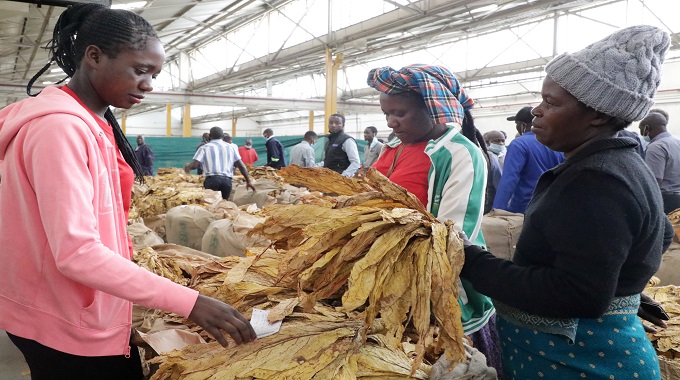
The Sunday Mail

Business Reporter
Tobacco deliveries are expected to reach a new record of 290 million kilogrammes during the current marketing season owing to a better-than-expected performance by farmers.
The Government, through the Tobacco Value Chain Transformation Plan, had initially planned to reach the target by 2025.
By Thursday last week, farmers had delivered 275,5 million kg worth US$832 million, up by 52,4 percent from 180,6 million kg valued at US$548,3 million during the same period last season.
Zimbabwe has already surpassed the record 260 million realised in 2019.
The crop sold under contract farming was roughly 256 million kg, while 19,2 million kg — or 7,5 percent of the overall deliveries — were sold via auction.
Average prices marginally dropped by 0,45 percent to US$3,02 per kg, from US$3,04 a year ago.
Tobacco Industry and Marketing Board acting chief executive officer Mr Emmanuel Matsvaire told The Sunday Mail Business that they were “now looking between 285 and 290 million kg”.
“We also put in place some methods to reduce post-harvest losses . . . while the early opening of the season ensures tobacco went through formal channels . . .
“All the measures were in the context of the Tobacco Value Chain Transformation Plan,” he said.
TIMB chairperson Mr Patrick Devenish said several farmers had become “financially stable”, while more banks are projected to increase support to smallholder farmers.
“I think more banks will try to fund small-scale farmers in the future,” said Mr Devenish.
Over the past few years, the auction system, which determines minimum grade prices for contract sales, has been on the decline. It accounted for only 3 percent of last year’s sales.
Some industry players have raised concerns over the potential collapse of the auction system, saying the dominance of contractors in the marketing of the “golden leaf” could see price manipulation in favour of the merchants, which would, in turn, frustrate tobacco farmers from growing the cash crop.
Before the country’s fast-track land reform programme, tobacco farming was a preserve of white large-scale commercial farmers.
However, smallholder farmers now account for the bulk of the output.
The swelling ranks of farmers of the golden leaf represent one of the major empowerment and transformative success stories by Government, especially the Second Republic.
Not only is the sub-sector anchoring the economy, but it is boosting rural incomes as well.
It is, however, believed that to get the maximum possible value from the crop, there was need to ensure locals participate in the value chain, as relatively more returns are accruing to leaf merchants and cigarette manufacturers.
In addition, about 98 percent of tobacco produced in Zimbabwe is exported in green (semi-processed) form by exclusively big tobacco merchants.
With a few exceptions, indigenous tobacco merchants have failed to penetrate this market due to entry barriers such as limited access to funding and markets, long working capital cycles and lack of factory processing capacity.
It is envisaged that increased participation by locals in key value chains would enable the country to benefit from the strategic crop.



